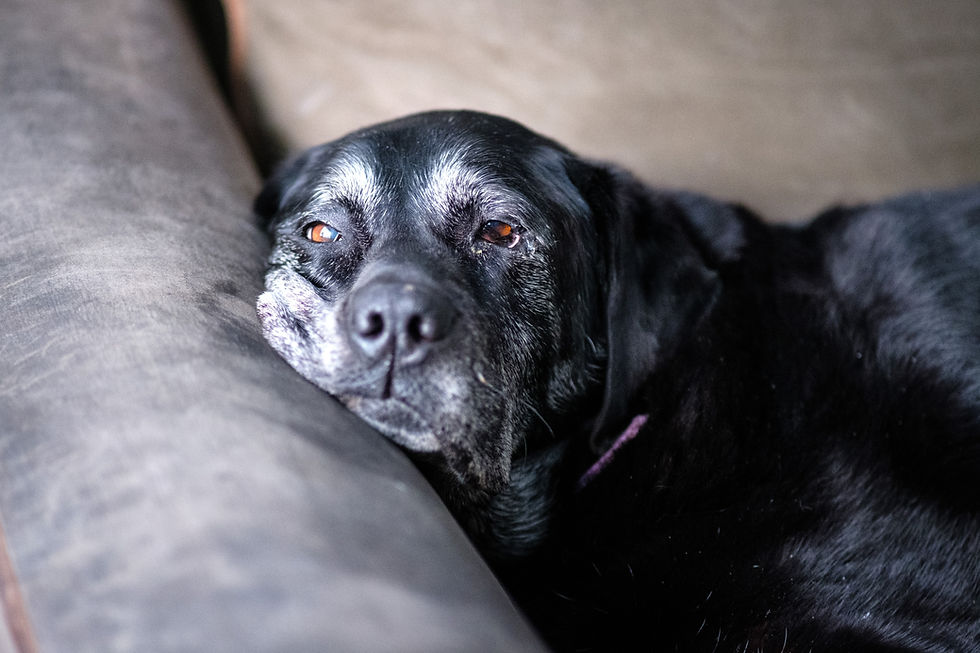Canine Massage Techniques Every Dog Owner Should Know
- K9MuscleWorks

- May 3
- 3 min read
Updated: Sep 20
As dog owners, we all want our companions to feel their best. One of the most underrated yet powerful ways to support your dog’s health is through canine massage techniques. Whether you're helping an active sport dog recover after training or just wanting to pamper your senior pup, regular massage can work wonders.
In this post, we’ll explore simple, effective massage methods you can use at home to promote your dog’s wellness, reduce muscle tension, and build a stronger bond with your dog. Plus, we’ll cover when it’s best to call in a certified canine massage therapist.

Why Canine Massage Matters
Massage isn’t just for humans. Dogs benefit from it in many of the same ways we do. Regular canine massage can:
Improve circulation and lymphatic drainage
Reduce muscle tension and stiffness
Support joint mobility
Aid in post-exercise recovery
Calm anxiety and promote relaxation
Help detect injuries, lumps, or changes early
Massage also builds trust and connection between you and your dog, especially when done consistently and gently.
Before You Begin: Massage Basics
Before starting any massage, make sure your dog is calm and in a comfortable environment. Choose a quiet space with a soft surface like a dog bed or mat.
Always start with a gentle touch. Watch your dog’s body language—if they seem tense, flinch, or move away, pause and reassess your pressure. Never massage an area that’s swollen, injured, or inflamed without guidance from your veterinarian.
5 Canine Massage Techniques You Can Use at Home
Here are five beginner-friendly techniques every dog owner should know:
1. Effleurage (Gliding Strokes)
This is a light, long stroking motion used to warm up muscles and improve circulation. Use flat hands and move in the direction of your dog’s hair growth, starting from the neck and moving toward the tail. Best for: Relaxation and warming up the body.
2. Petrissage (Kneading)
Gently lift and squeeze the muscles with your fingers and thumbs in a rhythmic pattern. Avoid pulling on the skin. Focus on larger muscle groups like the shoulders, thighs, and hips. Best for: Relieving muscle tension and stimulating deeper tissues.
3. Compression
Use the palm of your hand to apply gentle, rhythmic pressure directly onto muscle groups. Press down slightly and release in a pulsing rhythm. Best for: Encouraging blood flow and reducing muscle fatigue.
4. Passive Touch
This technique involves simply placing your hands gently on your dog without moving them. It can help calm anxious dogs and build trust. Best for: Nervous or reactive dogs who may be unsure about massage.
5. Ear Rubs and Facial Massage
Gently rub the base of your dog’s ears in small circles and lightly massage along the jawline and cheeks. Most dogs love this! Best for: Stress relief and calming the nervous system.
How Often Should You Massage Your Dog?
The frequency of massage depends on your dog’s age, activity level, and health. For sport or working dogs, 2–3 times a week may support performance and recovery. For senior or arthritic dogs, short daily sessions can help with mobility and comfort. Even once a week can make a noticeable difference.
When to Consult a Professional Canine Massage Therapist
While basic techniques are great for daily care, there are times when a certified professional is the best choice—especially if your dog:
Has recently had surgery or an injury
Shows signs of chronic pain or limping
Has performance-related issues or muscle imbalances
Is recovering from orthopedic conditions like hip dysplasia or arthritis
At K9 Muscleworks, we specialize in canine massage therapy tailored to your dog’s needs. Our goal is to support your dog’s health, performance, and overall quality of life through targeted bodywork and recovery techniques.
Canine massage is a simple yet powerful tool you can use to enhance your dog’s health and well-being. By learning these basic canine massage techniques, you’re giving your dog the gift of comfort, connection, and proactive care.
Want to learn more or book a professional canine massage? Visit K9 Muscleworks to explore services, read more articles, or schedule your session today.





Comments